Nitecore TINI Cu Flashlight Review
Nitecore has a copper (Cu) version of their TINI keychain flashlight. Same great dual switch interface, and a Cree XP-G2. Read on!
Official Specs and Features
Here’s a link to the Nitecore TINI Cu Flashlight product page.
Versions
There are a bunch of colors of this light, but they all have the same specs (well, except the weight of the copper version). There’s green, blue, black, red, silver, gray, gold, and copper.
Price
The copper version comes in at $31.95. The rest are $29.99.
Short Review
These are neat little lights. I think the copper is a nice touch, and for just $2 more, I’d almost universally recommend that version. It’s a good simple keychain light but lacks lockout.
Long Review
The Big Table
| Nitecore Tini Cu | |
|---|---|
| Emitter: | Cree XP-G2 (S3) |
| Price in USD at publication time: | $31.95 |
| Cell: | Internal |
| Turbo Runtime | High Runtime |
| LVP? | No |
| Switch Type: | E-Switch |
| Quiescent Current (A): | ? |
| On-Board Charging? | Yes |
| Chargetime | |
| Power off Charge Port with no Cell? | ? |
| Claimed Lumens (lm) | 380 |
| Measured Lumens (at 30s) | 480 (126.3% of claim)^ |
| Claimed Throw (m) | 64 |
| Candela (Calculated) in cd (at 30s) | 84lux @ 3.68m = 1138cd |
| Throw (Calculated) (m) | 67.5 (105.5% of claim)^ |
| All my Nitecore reviews! | |
^ Measurement disclaimer: Testing flashlights is my hobby. I use hobbyist-level equipment for testing, including some I made myself. Try not to get buried in the details of manufacturer specifications versus measurements recorded here; A certain amount of difference (say, 10 or 15%) is perfectly reasonable.
What’s Included
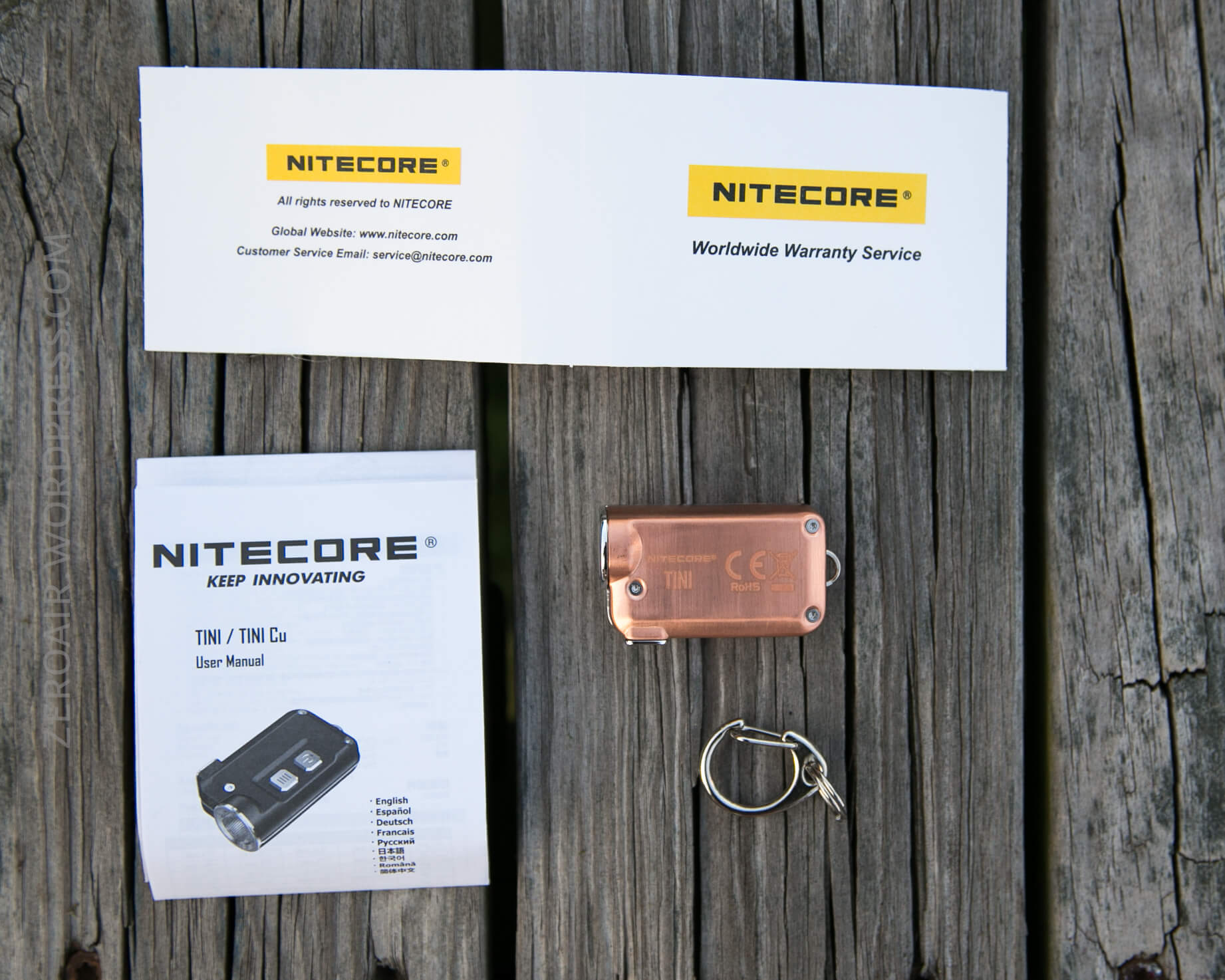
- Nitecore TINI Cu Keychain flashlight
- Split ring and keychain hook
- Manual and paperwork
Package and Manual
This special edition copper light warrants Nitecore to stray from their normal black and yellow package! This is a slim package, with nice photos and a feature list.
As the light is bare copper, Nitecore smartly packages it in a sealed plastic pouch.
Here’s a direct link to the pdf manual for this and all TINI lights. The manual is the same as for the TINI that I originally reviewed.
Build Quality and Disassembly
The body of this light is copper and in two parts. That’s always been my biggest complaint with the other small lights like this; that the body is two parts, requiring a seal between the parts, and around the micro-USB port the seals were questionable. The TINI is much more solidly constructed. The halves match up perfectly, and everything is completely snug (to be fair the TIP is like this too, but I do feel like the TINI is more solid).
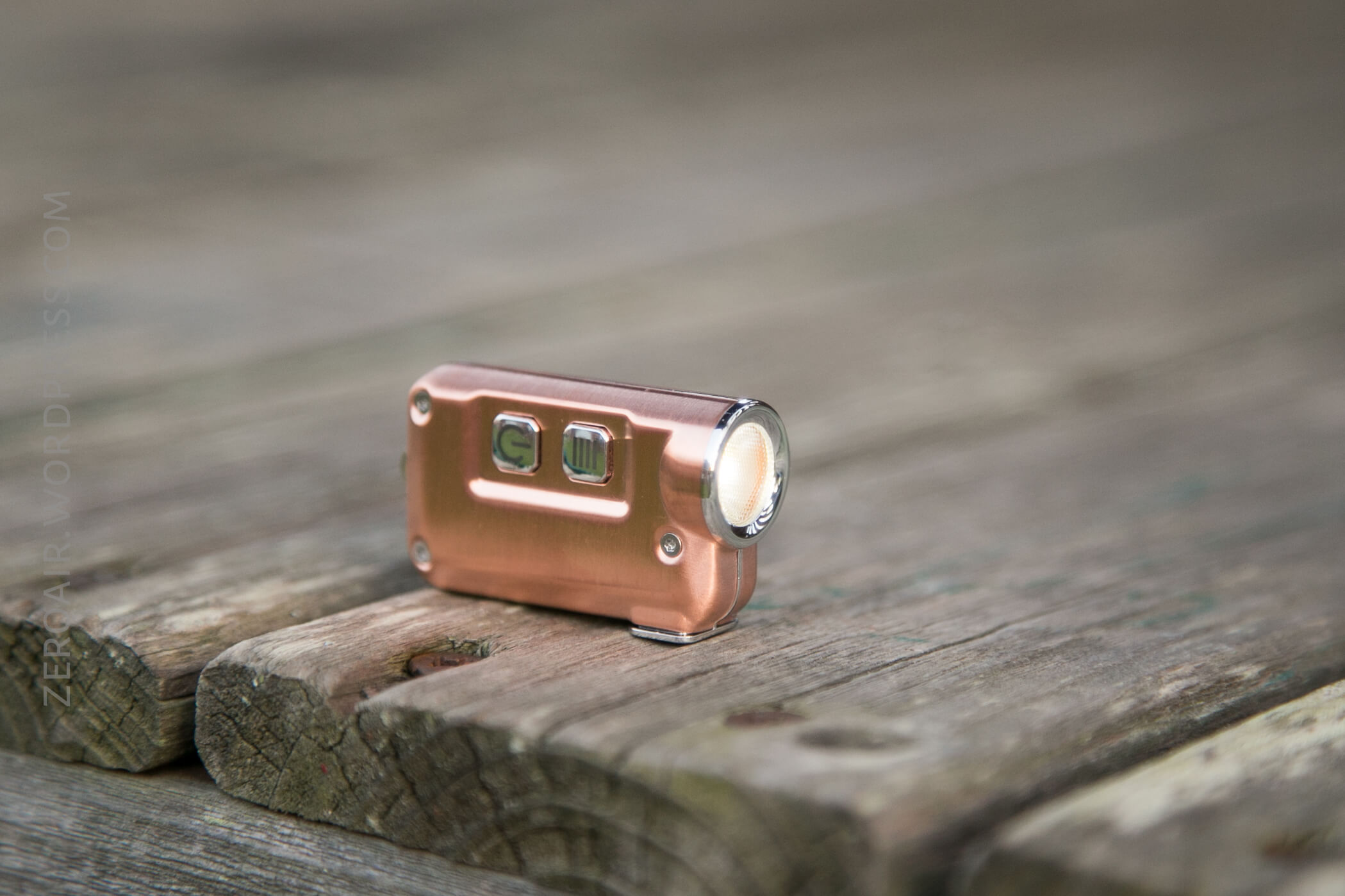
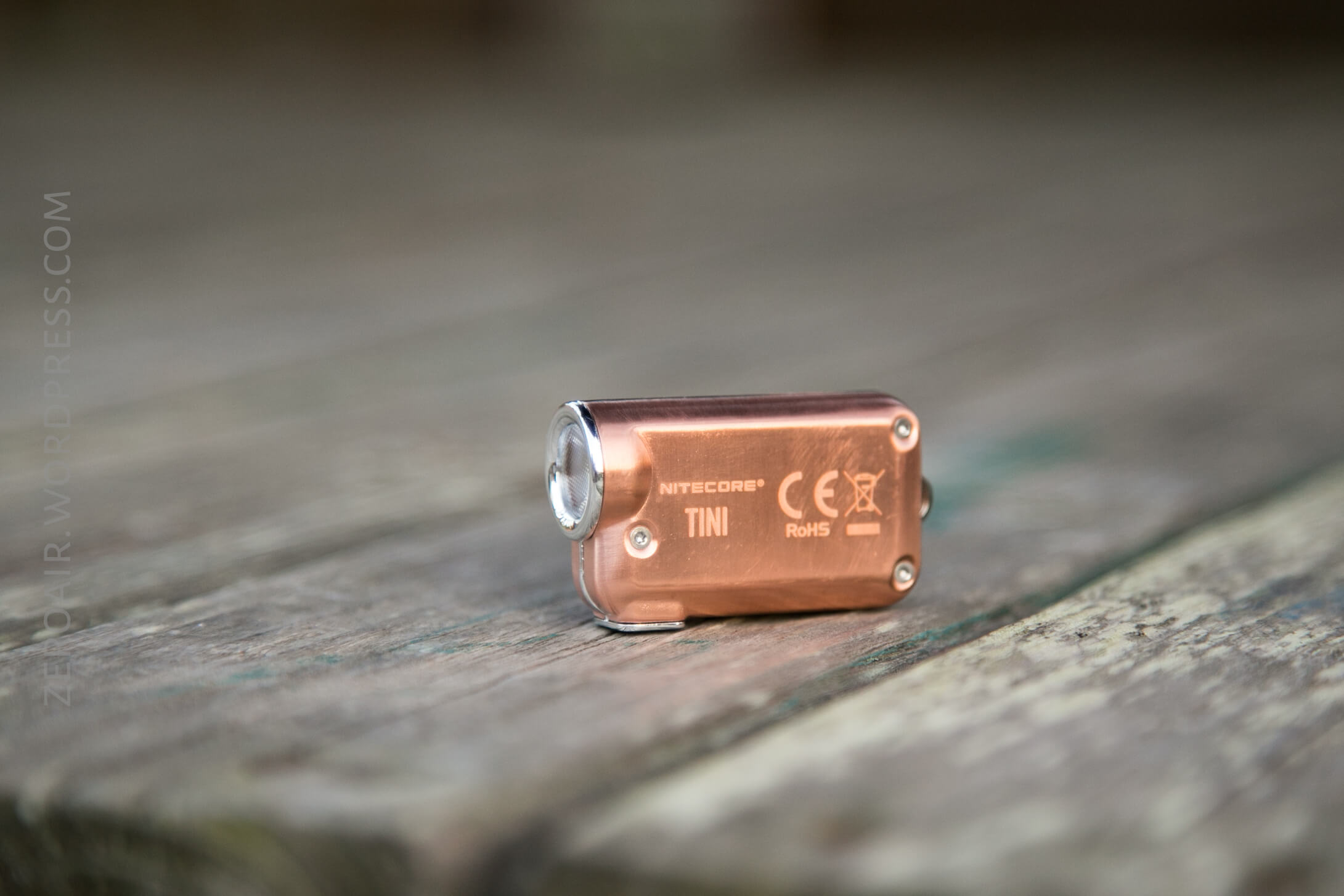
Size
Officially 43.3mm x 25.4mm x 11.5mm. The TINI is in fact tiny!
The aluminum TINI and the copper TINI are the same in size and guts.
This is indeed a small light. Below, it’s with the Olight I1R.
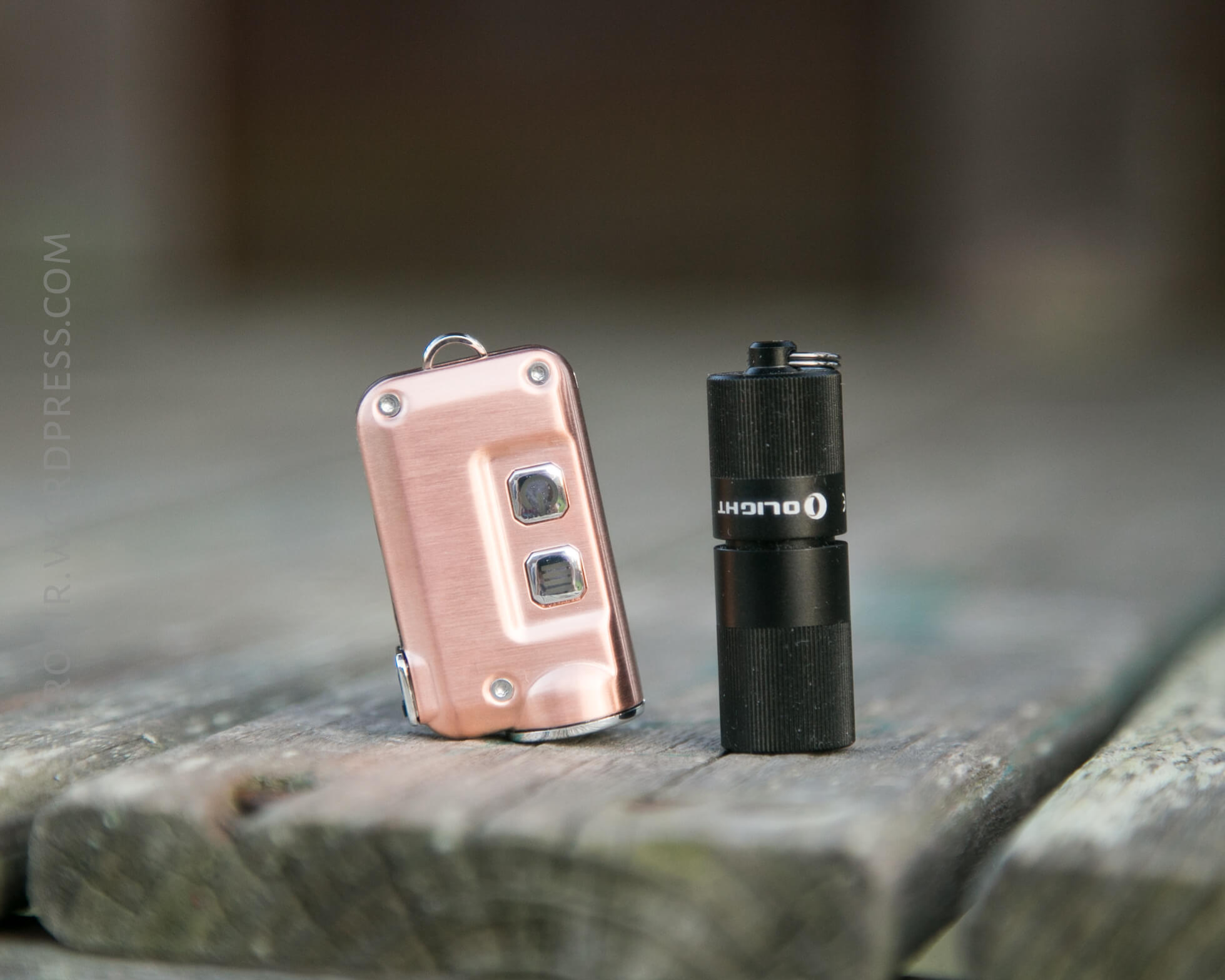
Retention
This is a keychain light, so there’s a keychain loop on the body. And Nitecore includes the pieces needed to attach the light to a keychain too. Even a reasonably quick quick release. There’s no magnet or any other way to retain the light.
I carry this in the pocket though, without any attachment. I prefer it that way. It’s semi-possible to lock the light out, by switching to the “DEMO” mode. The light will turn off after 30 seconds in this mode. But it’s still not a proper lockout.
Power
TINI Cu has a built-in internal cell, which is claimed at 280mAh. Nitecore has been accurate in the past with their other similar models. This isn’t a user-replaceable battery.
Here’s a runtime on Turbo – I actually used a clothespin to hold down the button for the whole runtime. As far as I can tell that’s the only way to keep the light on Turbo!

Though the light only claims 380 lumens, I measured it much higher than that, at around 480 (30s). I don’t think this is due to the difference in material or heat managing ability of the copper.
Here’s a runtime on High. This is a very stable output for over 50 minutes!

In all my tests, the light only switched to very low output (read as “0” on my apparatus), but never actually shut off.
Charging
Charging is by micro-USB. A cable is not included, so be prepared to bring your own!
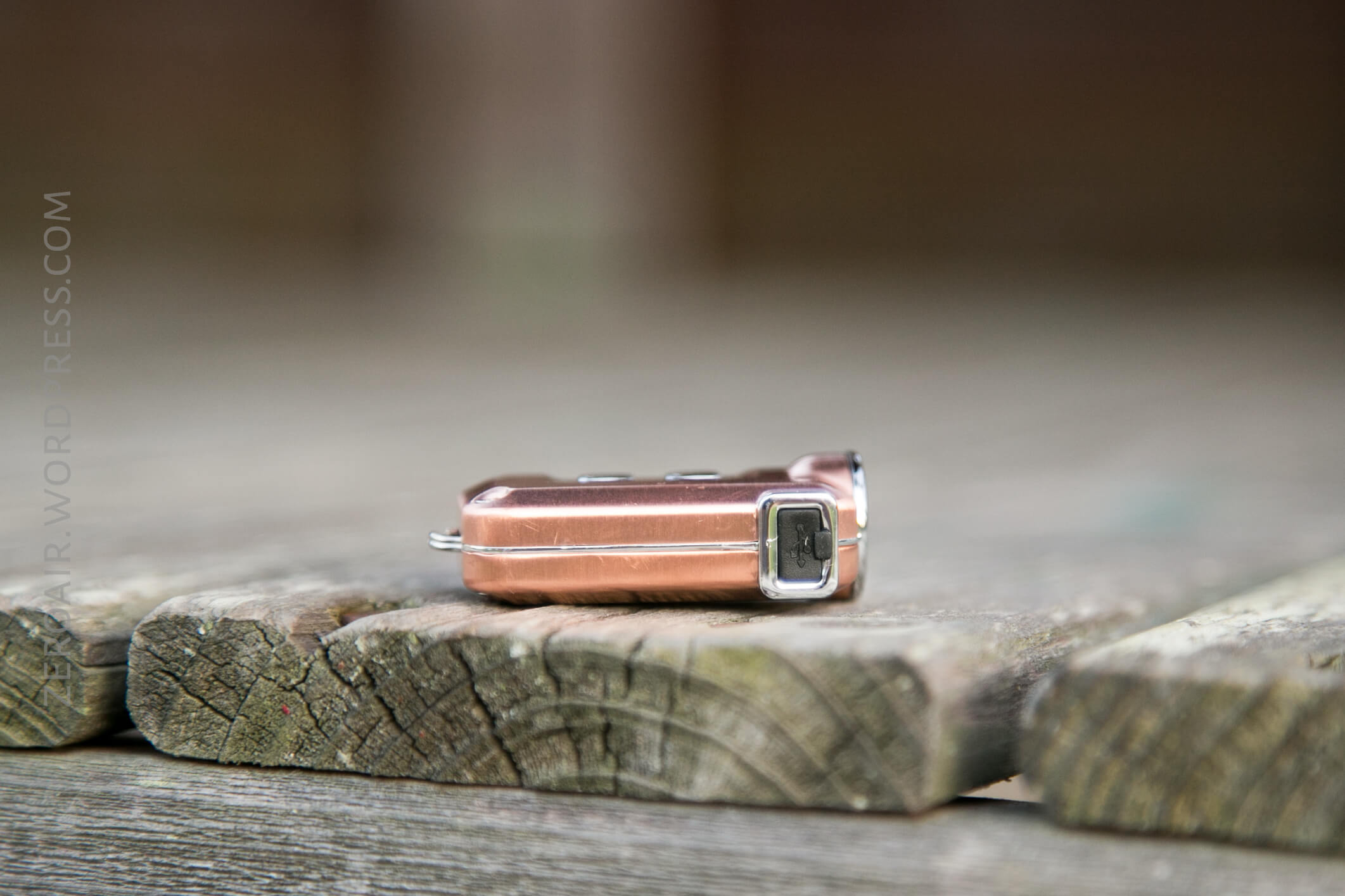
Here’s a chargetime, showing the battery is around the claimed capacity. When charging is complete, there does not seem to be any trickle charge. This is a small battery (claimed 280mAh) and charges at around 0.27A, which is approximately 1C. Good charging.

User Interface and Operation
Two indicating switches are on the side of the TINI. One is the “Power switch” (PS) and the other is the “Mode switch” (MS). There are two mode groups on the TINI, as well. One
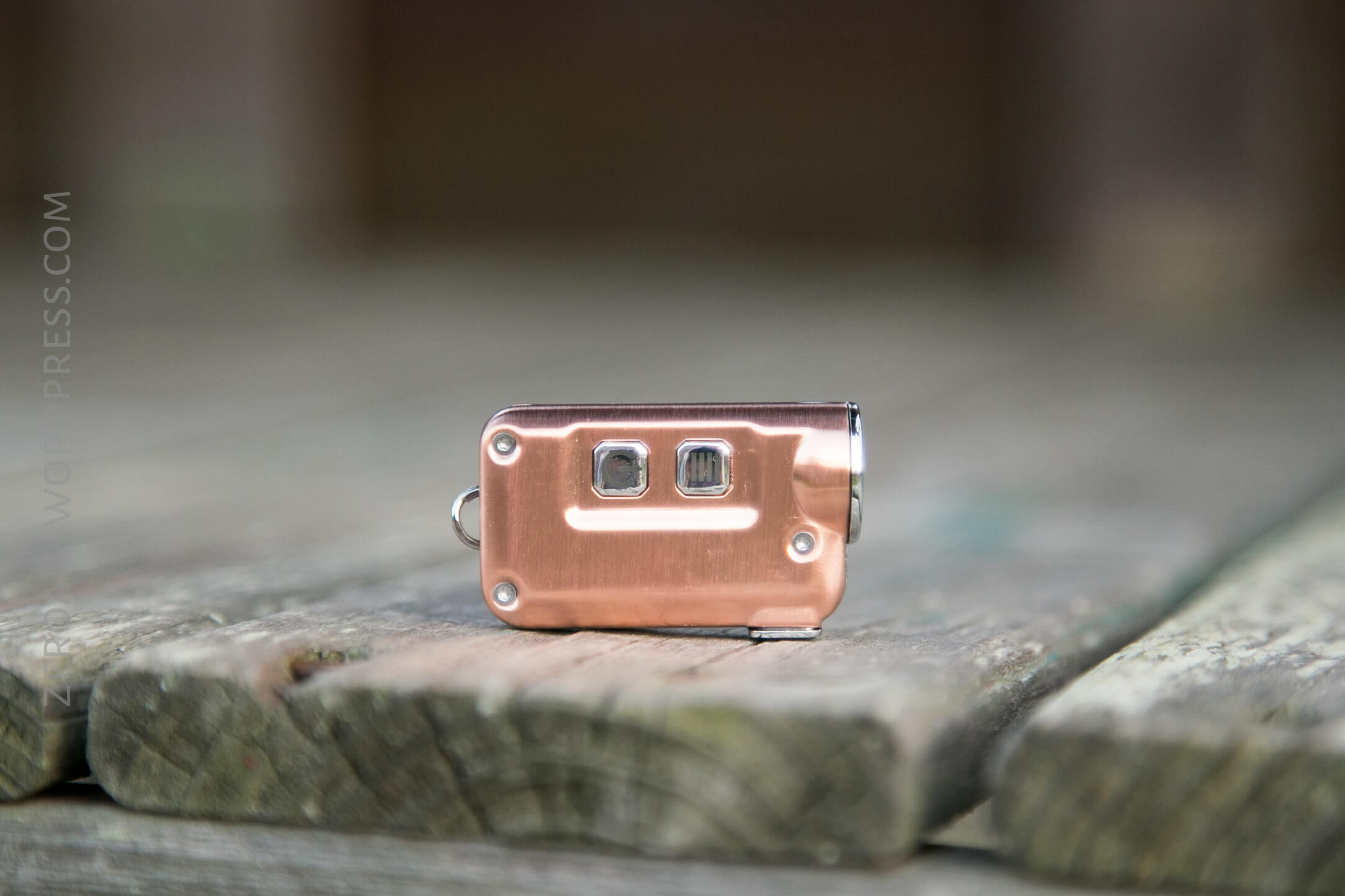
Here’s a UI table!
| State | Action | Result |
|---|---|---|
| Off | Click Power Switch (PS) | No action |
| Off | Click Mode Switch (MS) | Battery Check^ |
| Off | Hold PS | On (mode memory, no turbo) |
| Any | Hold MS | Turbo (momentary) |
| Off | Both (>1s) | Switch mode groups^^ |
| Off | Double click (either) | No action |
| On | Click PS | Off |
| On | Click MS | Mode advance (L>M>H) |
^ Battery check:
3 flashes = Battery > 50%
2 flashes = Battery < 50%
1 flash = Battery < 10%
^^ One flash indicates Demo Mode, two flashes indicates Daily Mode.
Demo mode: Light will turn off after 30 seconds.
Daily mode: Light must be turned off manually.
Modes
| Mode | Mode Claimed Output (lm) | Claimed Runtime | Measured Lumens |
|---|---|---|---|
| Turbo | 380 | 15m | 471 |
| High | 145 | 1h | 189 |
| Medium | 38 | 4h | 40 |
| Low | 1 | 60h | 1 |
LED and Beam
A Cree XP-G2 is in the TINI, behind a TIR with texture. The beam has a typical TIR shape but the stippling on the TIR diffuses the edges of the spot more than with clear TIR’s. I’d say this is a good keychain beam profile.
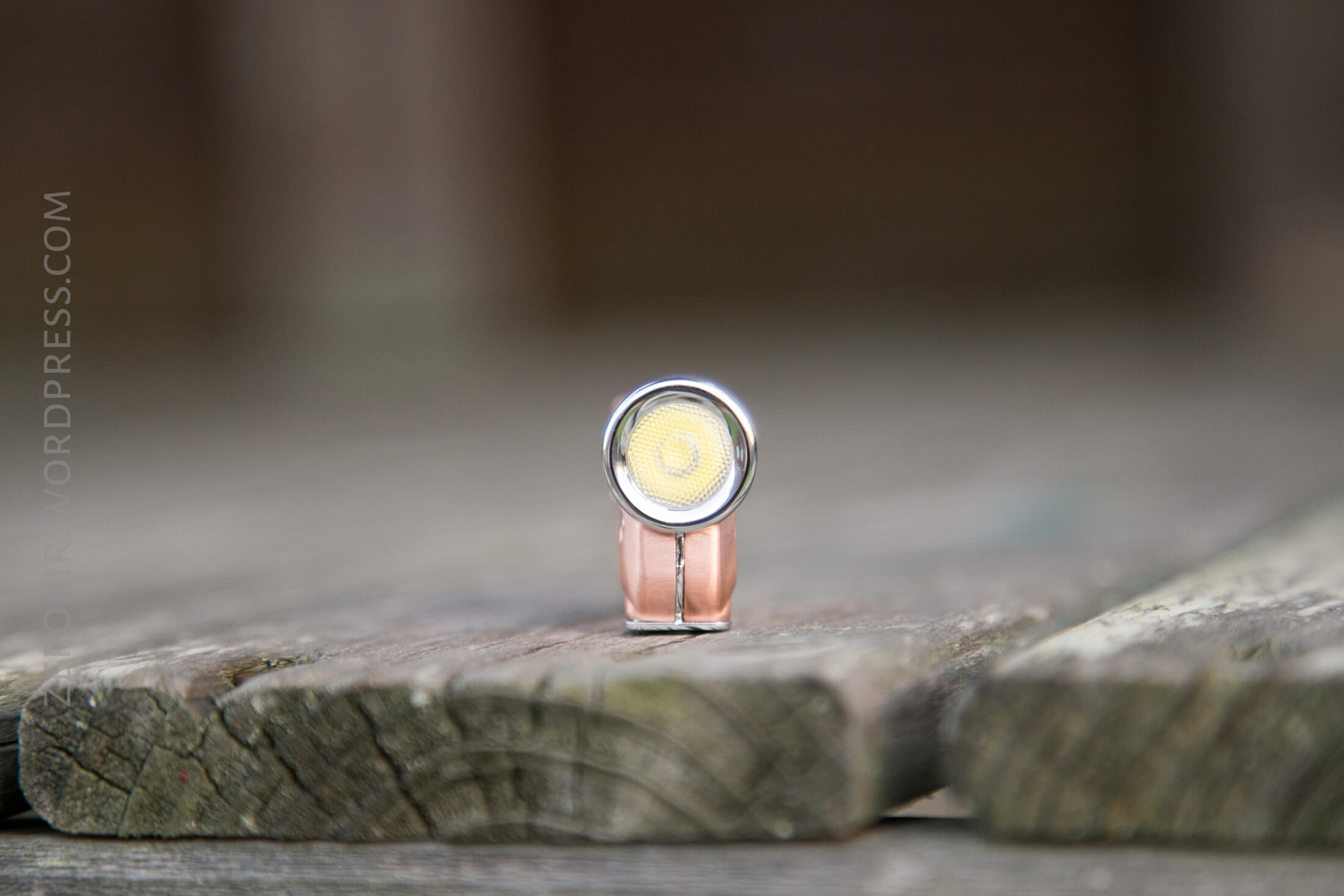
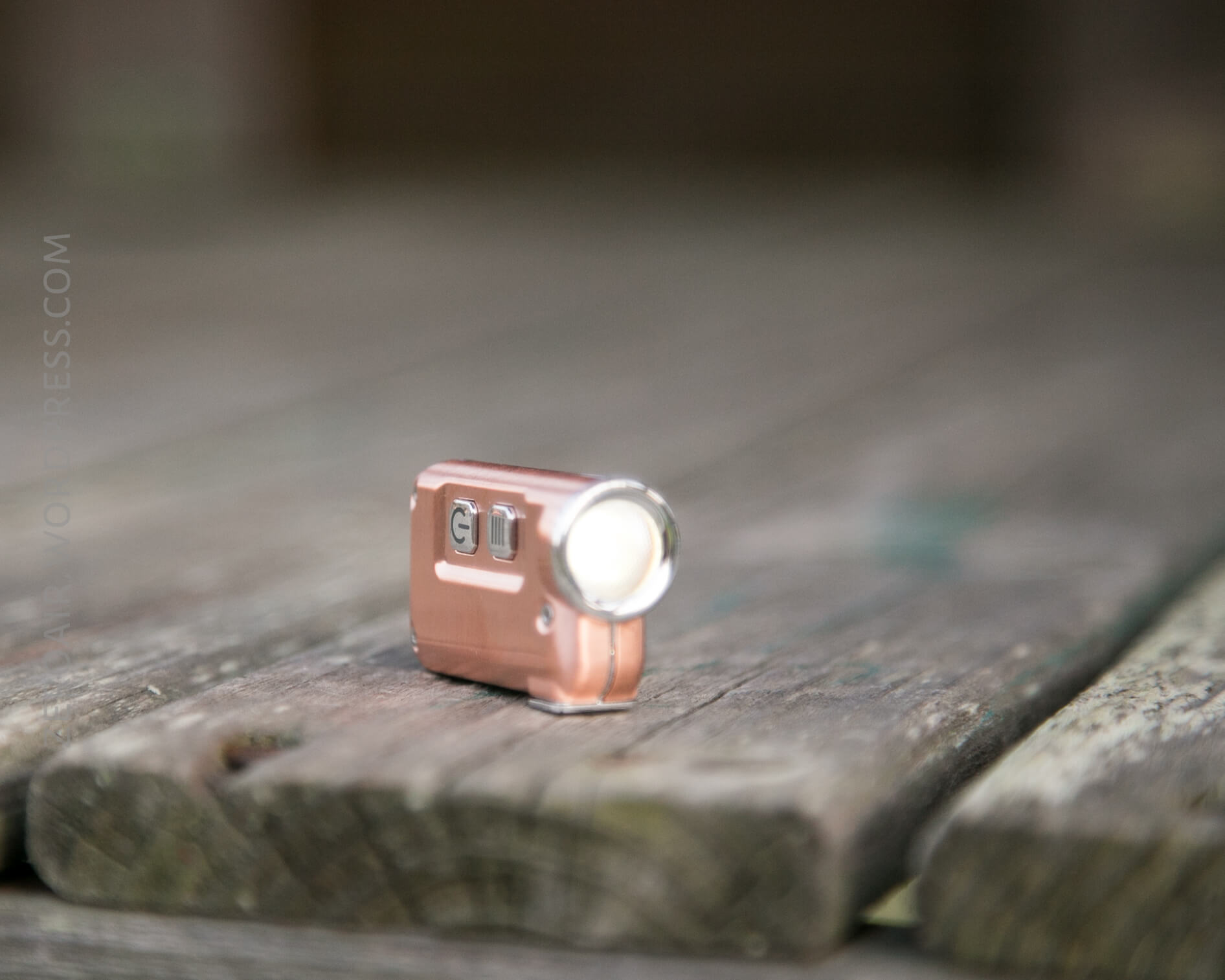
The beam is a spot with very smooth roll off.
Beamshots
These beamshots are always with the following settings: f8, ISO100, 0.3s shutter, and manual 5000K exposure.
Tint vs BLF-348 (KillzoneFlashlights.com 219b version) (affiliate link)
I keep the test flashlight on the left, and the BLF-348 reference flashlight on the right.
The tint doesn’t look “great” here but in reality, I find it to be quite pleasant!

Random Comparisons and Competitive Options….
Nitecore makes some of the main competition in this class, and among all those I’d pick the TINI. Acebeam has the UC15, which is similar but really more in the class of the TIP. I reviewed the UC15 here.
Conclusion
What I like
- Actual, uncoated copper, firm (ie fitment) body
- Nice big lens (bigger than TIP’s)
- Good output from tiny light
What I don’t like
- Can’t leave the light on in Turbo
- UI is a little unusual
Notes
- This light was provided by Nitecore for review. I was not paid to write this review.
- This content originally appeared at zeroair.org. Please visit there for the best experience!
- For flashlight-related patches, stickers, and gear, head over to PhotonPhreaks.com!
- Use my amazon.com referral link if you’re willing to help support making more reviews like this one!
- Please support me on Patreon! I deeply appreciate your support!






















Pingback: Flashlight Review 8-7-18 - FlashLight Packs